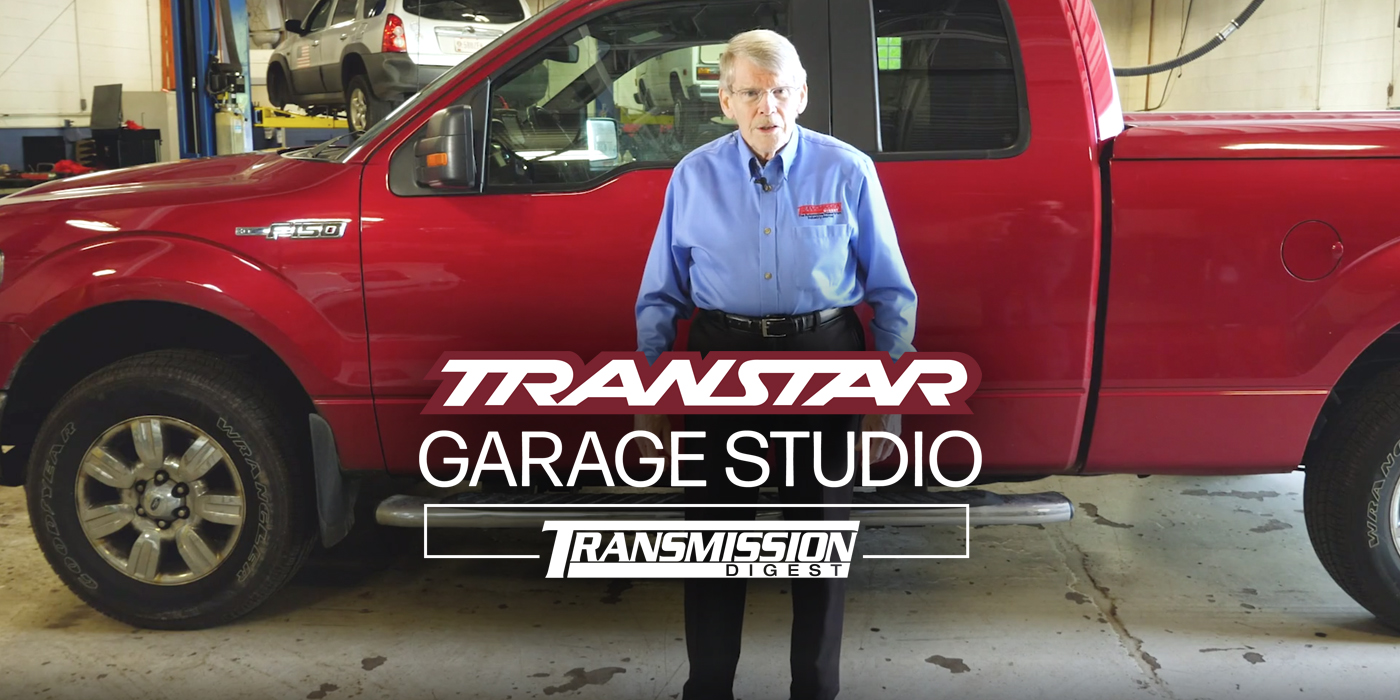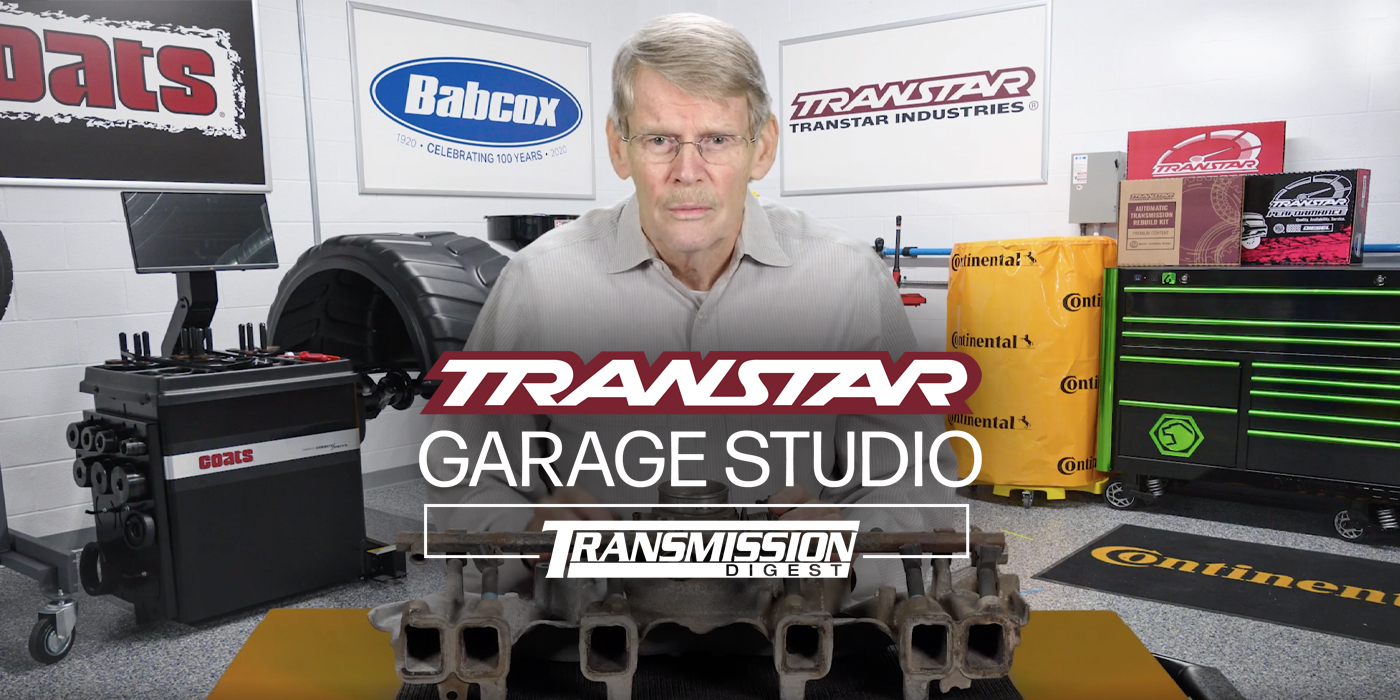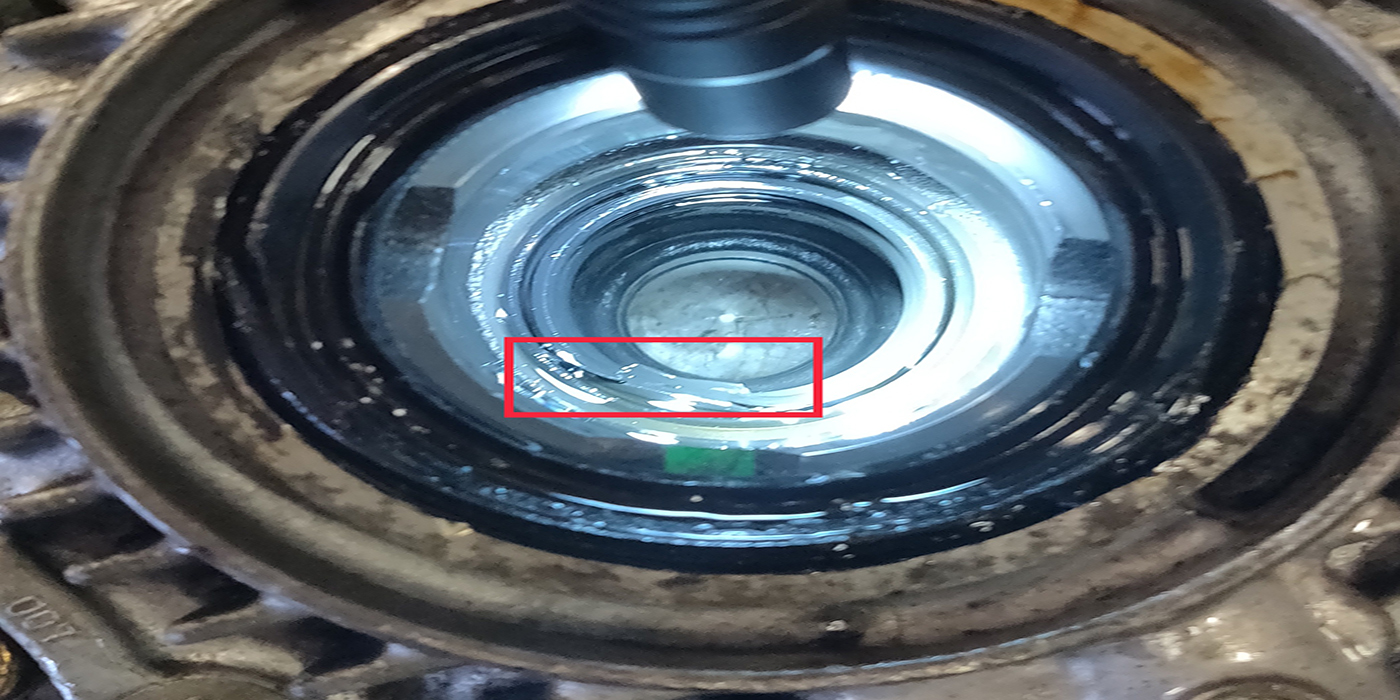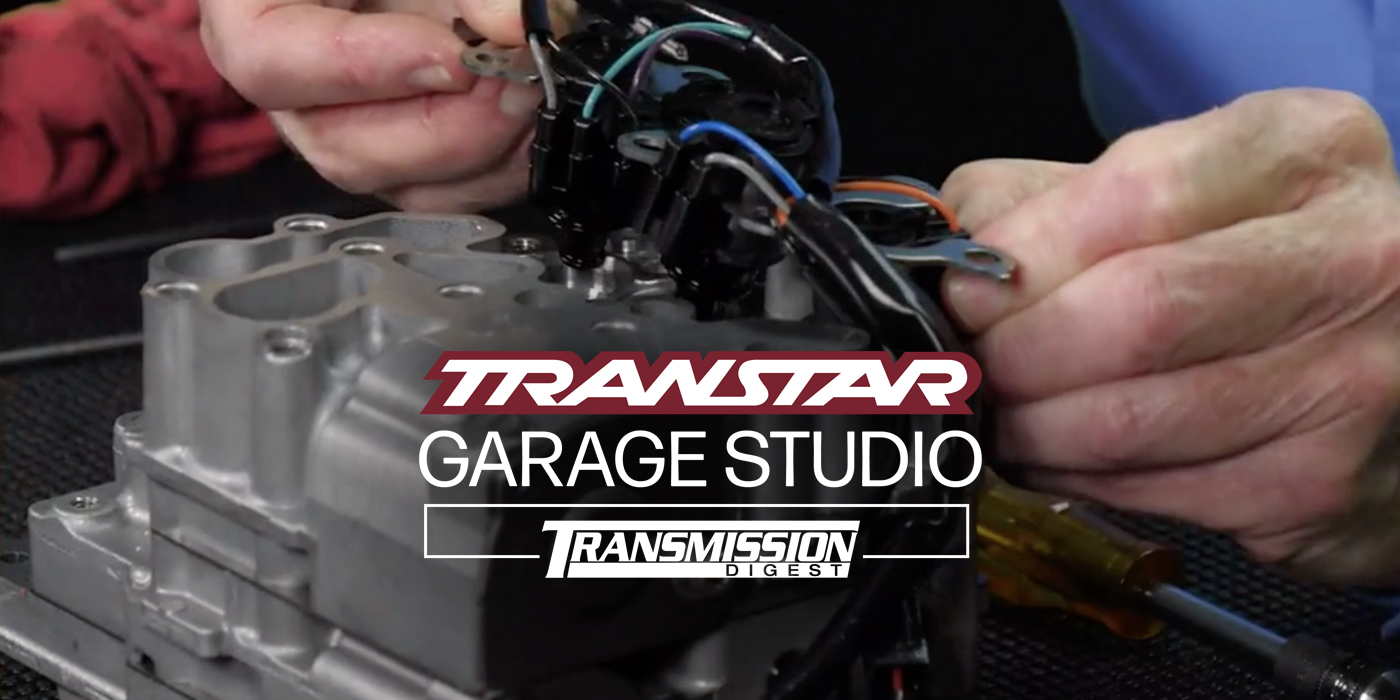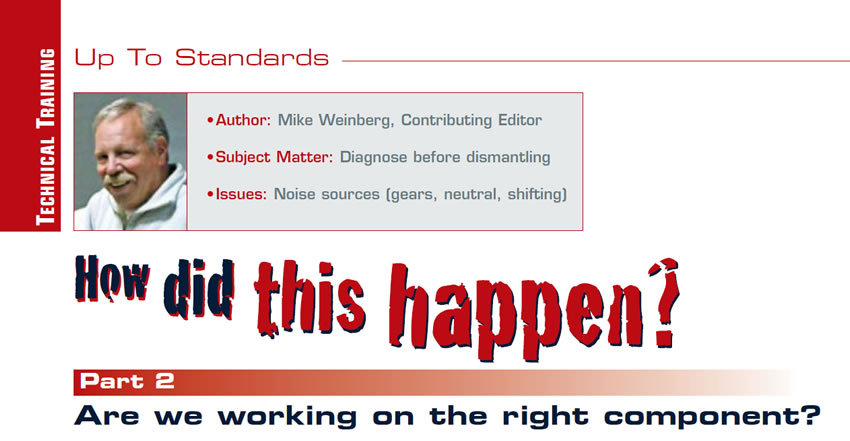
Up to Standards
- Author: Mike Weinberg, Contributing Editor
- Subject Matter: Diagnose before dismantling
- Issues: Noise sources (gears, neutral, shifting)
Continuing last month’s series of real-world fixes for time-consuming problems, we go to examine diagnostic errors that have us working on the wrong component.
Many problems in particular noises confound the diagnostic routines. There is an inbred genetic code in all transmission men to instantly wish to pull out the unit. Force yourself to avoid removing any component until all external sources of the complaint have been examined.
Noises, chatters, bangs, grunts, judders, whines, etc. travel through solid objects much faster than through air. This creates many time-wasting approaches to a solution, so always work from the outside in with the trans or T-case the last thing to be removed. I cannot tell you how many transmissions and transfer cases I have seen over the years that were misdiagnosed and disassembled due to a noisy rear end.
The rear-end noises come through the drive shaft and seem to be right under the driver’s seat. What is really happening is that noise travels through air at Mach 1 (about. 700 mph) and the same noise through steel is moving at about Mach 3. Now the unit gets pulled and torn down and there is nothing found. Couple that with the fact that there are no engines, transmissions, T-cases, etc., that are silent in operation.
The research and development of gear patterns to eliminate as much noise as possible is ongoing, but they still have to do a tremendous amount of work in the vehicle interior to deaden all the sound and road and tire noise. Here we will discuss the real-world causes of many misdiagnosed problems.

Gear rattle or neutral rollover noise
The complaint will be heard in neutral with the clutch engaged or at low speeds on initial takeoff. The diagnostic tip is to slowly rev the motor from idle speed to about 2,500 rpm and see if the noise floats out. The cause of the noise is engine harmonics being transferred into the gearbox and rattling the gears. It sounds alarming to the driver, but will actually not harm the transmission.
All engines produce harmonic vibrations due to the firing pulses of a four-stroke motor. The manufacturer puts damping units on the crankshaft, balances the clutch and flywheel package, and has as much isolation as possible through the engine and transmission mounts. Consider:
- Is the unit equipped with a dual-mass flywheel, and is that flywheel any good, or are the damper springs shot allowing the secondary plate to move against the primary plate?
- Is there a clutch setup with bad damper springs, a solid hub with no springs, a dual disc clutch with a stuck or loose floater plate that is transferring the vibration into the gear train?
- If the clutch set has been changed previously to your getting involved, did the dual-mass flywheel get swapped for a solid flywheel because they don’t make the original part anymore?
You can take the transmissions apart and replace every single piece and still have the noise, because it doesn’t come from the gearbox.

Chatter noise between shifts on manual transmissions
When the clutch is disengaged during a shift, the rear wheels or front wheels (driving wheels) are driving the gear train. Usually a chatter noise at this point is caused by a worn or cocked synchro ring that is fluttering against the cone of the speed gear during the shift. If the ring is worn enough, it will vibrate until a high enough rpm is achieved to make it stop centrifugally.
Another cause of chatter during a shift is the wrong lubricant in the trans. Back in the day when synchro rings were brass or bronze, 90-weight gear oil was the usual gearbox lube. Cold-weather hard shifting made the manufacturers go to a lighter oil such as ATF so you didn’t need two men and a boy to shift at freezing temperatures when the 90 weight was like molasses.
Now we have carbon fiber, Kevlar, paper lined, and sintered-metal hybrid rings that require a fluid designed with the proper coefficient of friction to optimize the compound of the synchro ring. Wrong oil = notchy grinding shifts, chattering rings, whines in neutral and all manner of pain in the butt issues. We sell those specific oils because we found that on a Friday afternoon, if the correct factory fill was not available, anything on hand would go into the trans to get the job out the door and money in the register. Monday the phone calls started and a bunch of wasted time due to an incorrect lube used for the synchros to properly perform.
All-wheel-drive transfer cases noisy on the lift
Driving an all-wheel drive transfer case with the wheels in the air on a lift will generate some ungodly noise, creating the impression that there is a problem in the transfer case. The noise occurs with the wheels in the air because these units are usually equipped with a center differential that is an open diff (planetary type) that have straight-cut gearing to split the torque between the rear and front axles. These planetary-type center differentials have a torque split between front and rear, which is usually about 60% to the rear and 40% to the front. When the vehicle is on the ground, all the tires are turning at the same speed, and the center diff is spinning at the same speed as the drive shafts. In the air, there is a 20% difference between the shaft speeds, and the straight-cut gears start to scream.
I can’t tell you how many guys we’ve had with units apart finding nothing wrong inside because they heard a noise on the lift. The wasted time at prevailing rates would buy you a nice vacation home. If you don’t learn how these systems operate, you will get old and grey before your time.

Ford clutch-controlled transfer cases banging on take off (2002 and up) mostly created by mismatched tire sizes. When working on any transfer-case vehicle, use a stagger gauge and measure the tire circumferences, which must be within 1/4-inch or less on all four wheels. Next, make sure that all the tire pressures are even and correct. The takeoff bang can also occur due to lubricant that is burnt or overheated and the additive package that provides the correct coefficient for the clutches is gone. Remember that many of these vehicles now have traction control, stability control and ABS systems. 2004-up 4411 and 4412 Borg Warner transfer cases get taken apart all the time when the problem is a bad wheel-speed sensor. Get in the habit of measuring tires on every job, and scanning all the speed sensors to make sure that the problem is internal and not external.
Jeep 2005-up Grand Cherokee binds on turns usually when cold in the morning.
This is usually blamed on the transfer case, and it is a false assumption. These late-model Grand Cherokees are equipped with ELSDs (Electronic Limited Slip Differentials) on both front and rear axles. These are complex systems that rely on electronics and multiple sensors to perform. The front diff is a clutch-pack equipped limited slip differential. Inside the diff carrier is a gear rotor type pump that supplies pressure to lock up the pack. If there is a difference between the speeds of the left and right front wheels, that information will be sent to the computer, which is known as the FDCM (Final Drive Control Module). The FDCM will activate a solenoid valve in the diff that will apply the clutch pack, sending power to the slower turning wheel until both wheel speeds are equal. When the antilock brakes are applied, the solenoid is switched off and the clutch pack will bleed off pressure and release.
Inputs to the FDCM are from the lateral accelerometer (stability control), the transfer-case range switch, the transfer-case mode sensor signal, front diff temperature sensor, rear diff temperature sensor, 3 positive battery feeds, an ignition RUN sensor, sensor grounds, module grounds, and a CAN C Bus. The FDCM outputs are 5-volt supply sensor, transfer-case neutral lamp, front ELSD pressure solenoid, rear ELSD pressure solenoid, transfer-case motor, switched battery positive and transfer-case motor brake control.
There is not enough room here to completely discuss the entire system, but it should be obvious that there is a lot of electronic diagnosis and code scanning to do here before ever getting into the transfer case. Don’t forget that tire sizes and pressures will have a direct effect on the operation of these systems.

Mike Weinberg is president of Rockland Standard Gear.










